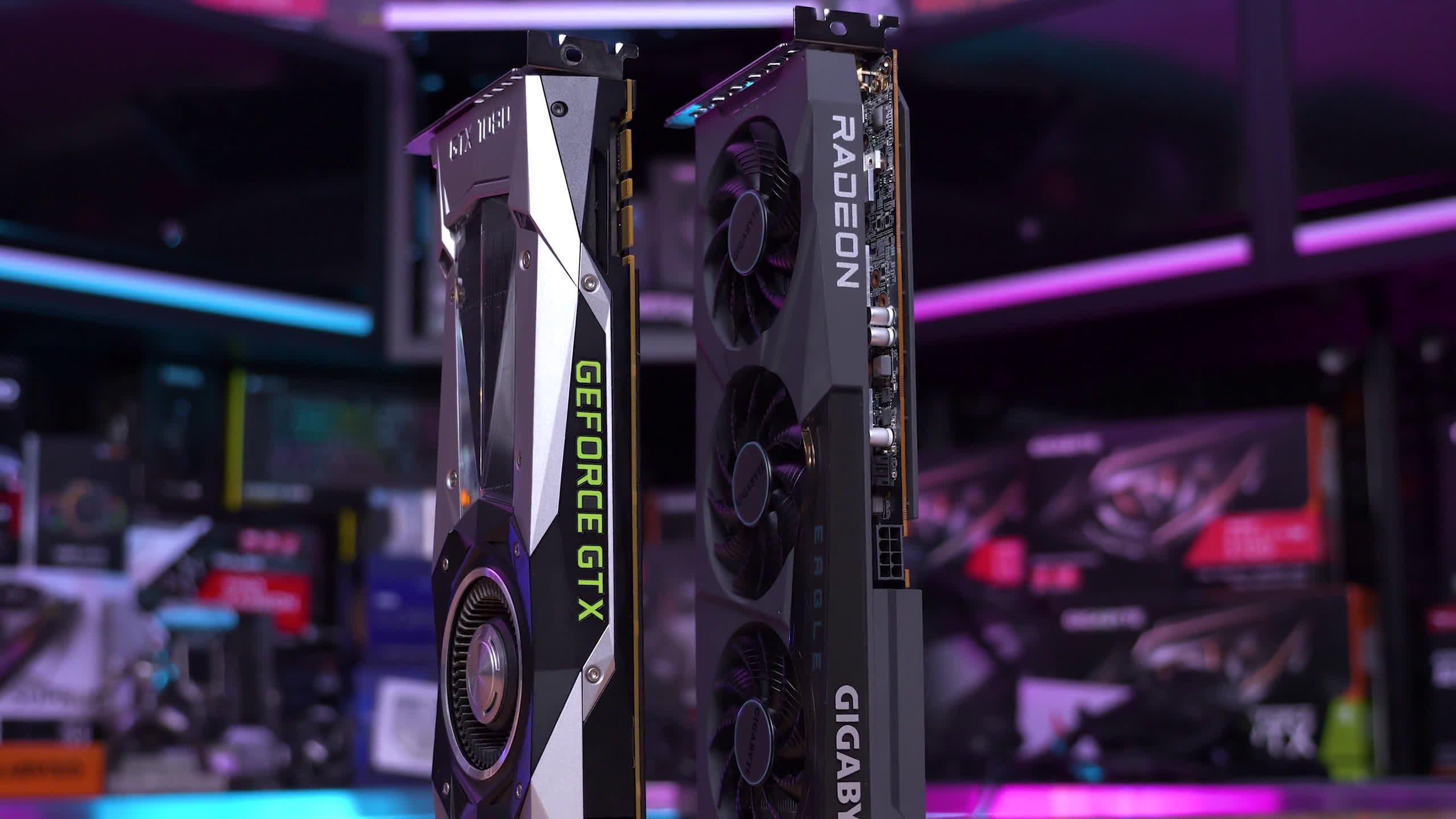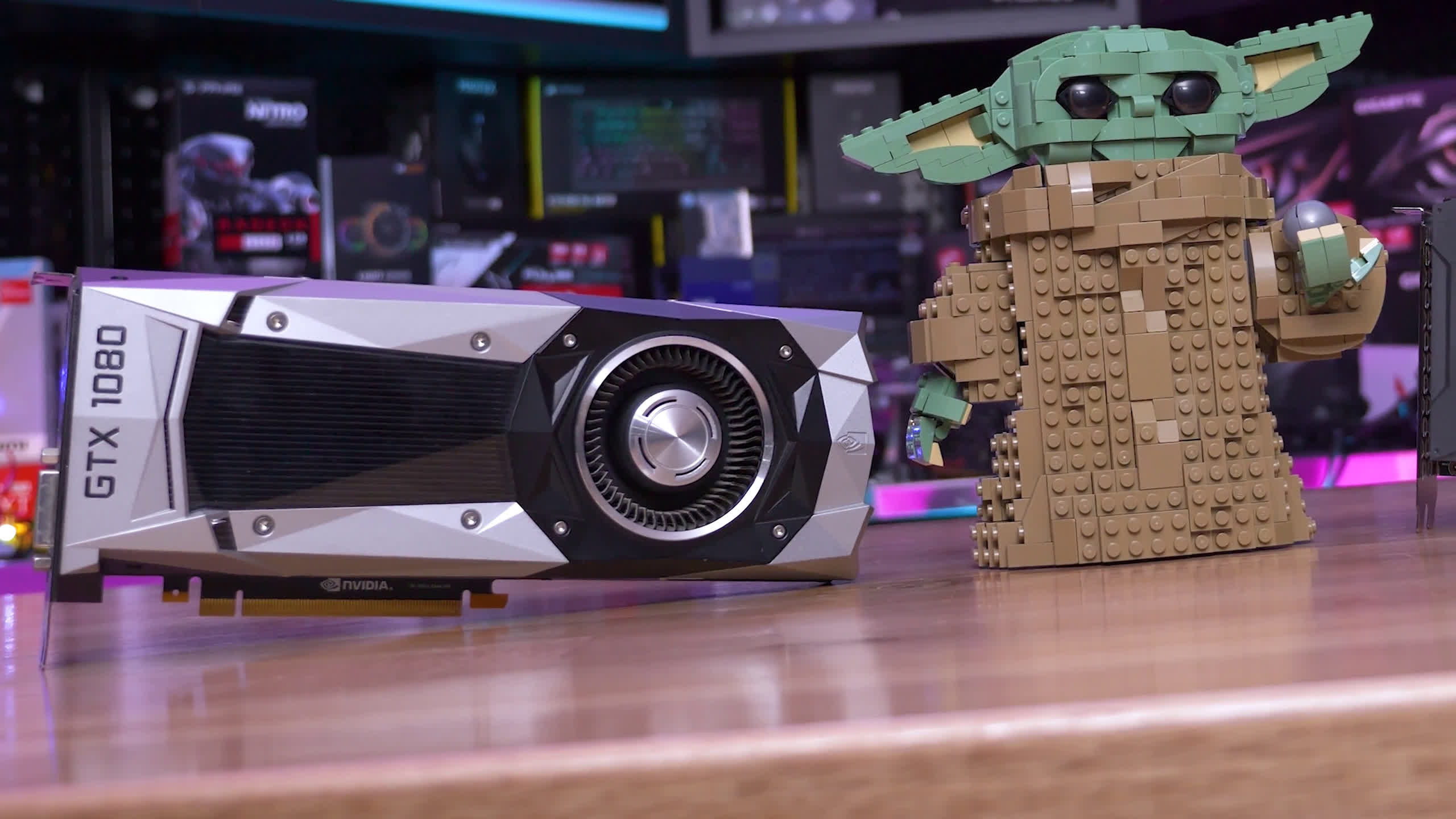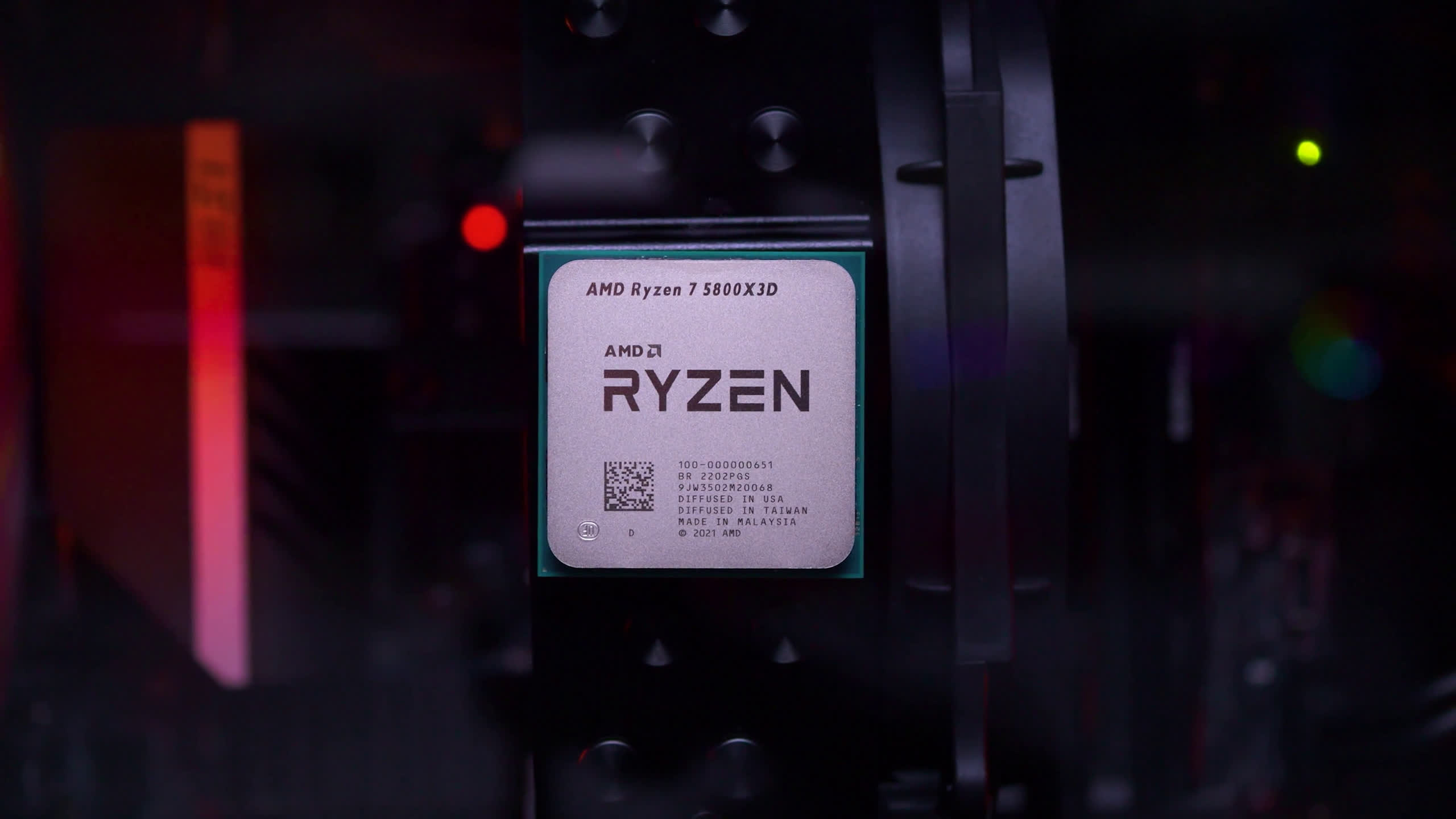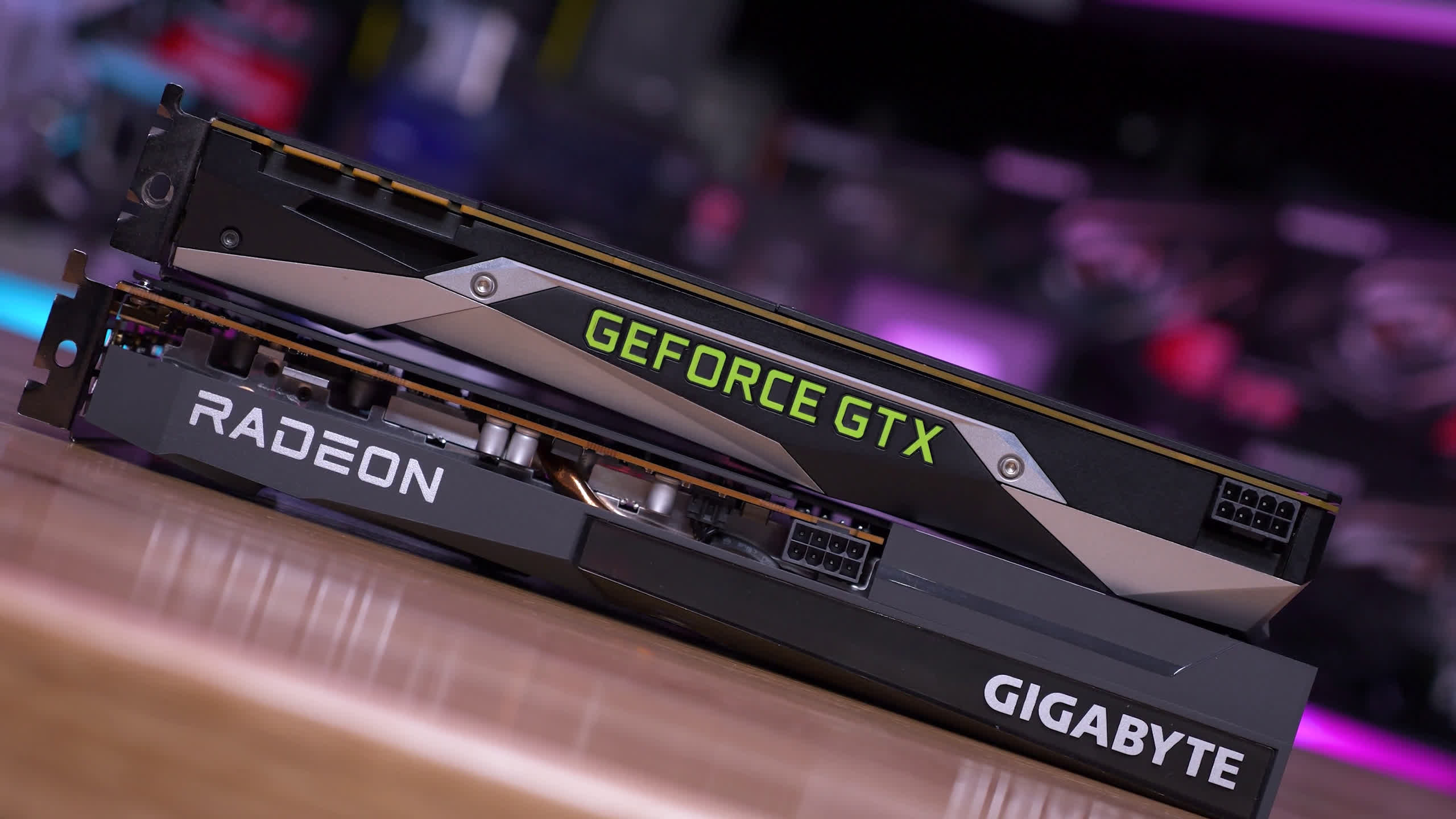Today's comparison is about two GPUs that we never thought about putting head to head, but after thinking it over, it seems like an interesting matchup. The GeForce GTX 1080 was released in mid-2016 at an MSRP of $600, or up to $700 for those that bought the Founders Edition version. For reference, we'll go with $600 as there were decent cards available at that price and it was eventually discounted to $500 across the lineup.
The GTX 1080 was a beast, the Pascal architecture was efficient, and the GeForce 10 series was exceptional, especially the GTX 1070 and 1080 models. Admittedly, we have a soft spot for products such as the GTX 1080.
We'd go as far as saying that the GTX 1080 Ti has gone down as one of the best GPUs of all time, and we'll probably revisit it soon. The standard GTX 1080 was also great though...
Now for the question. Can today's value king GPU, the Radeon RX 6600, hold a candle to the GTX 1080? In other words, after six years can a mid-range $270 graphics card compete with 2016's flagship GeForce GPU?
Also making the comparison interesting and relevant for budget shoppers is the fact that you can typically buy a second hard GTX 1080 for around $200, making it a little more affordable.
We're going to find out how these two GPUs match up by testing 51 games and by the end of this article we'll have our answer.
Should you buy a second hand GTX 1080, or spend a little more on a Radeon 6600? For those of you not interested in buying either, we suspect the results will still be interesting, so let's get into it.
For testing we're using our Ryzen 7 5800X3D test system using 32GB of DDR4-3200 CL14 memory along with the latest available display drivers. Resizable BAR has been enabled for all games tested at 1080p and 1440p. Let's get into it...
Benchmarks
First up we have Fortnite, where the Radeon RX 6600 comfortably beat out the GTX 1080 by a 17% margin at both tested resolutions. The GeForce GTX 1080 was still very capable and for those gaming at 1080p, frame rates will be acceptable, but the newer and cheaper RX 6600 is certainly the superior product in this title.
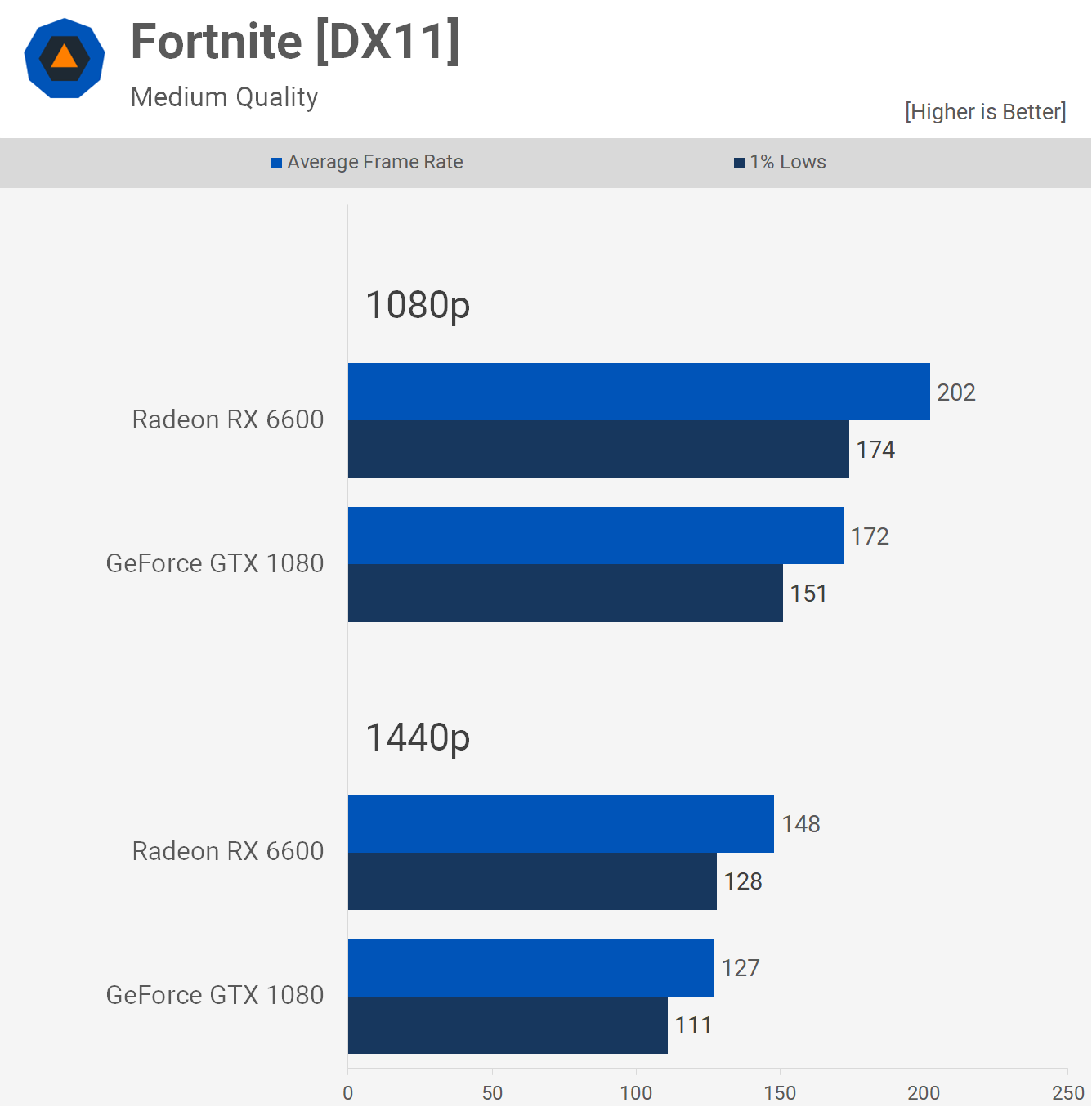
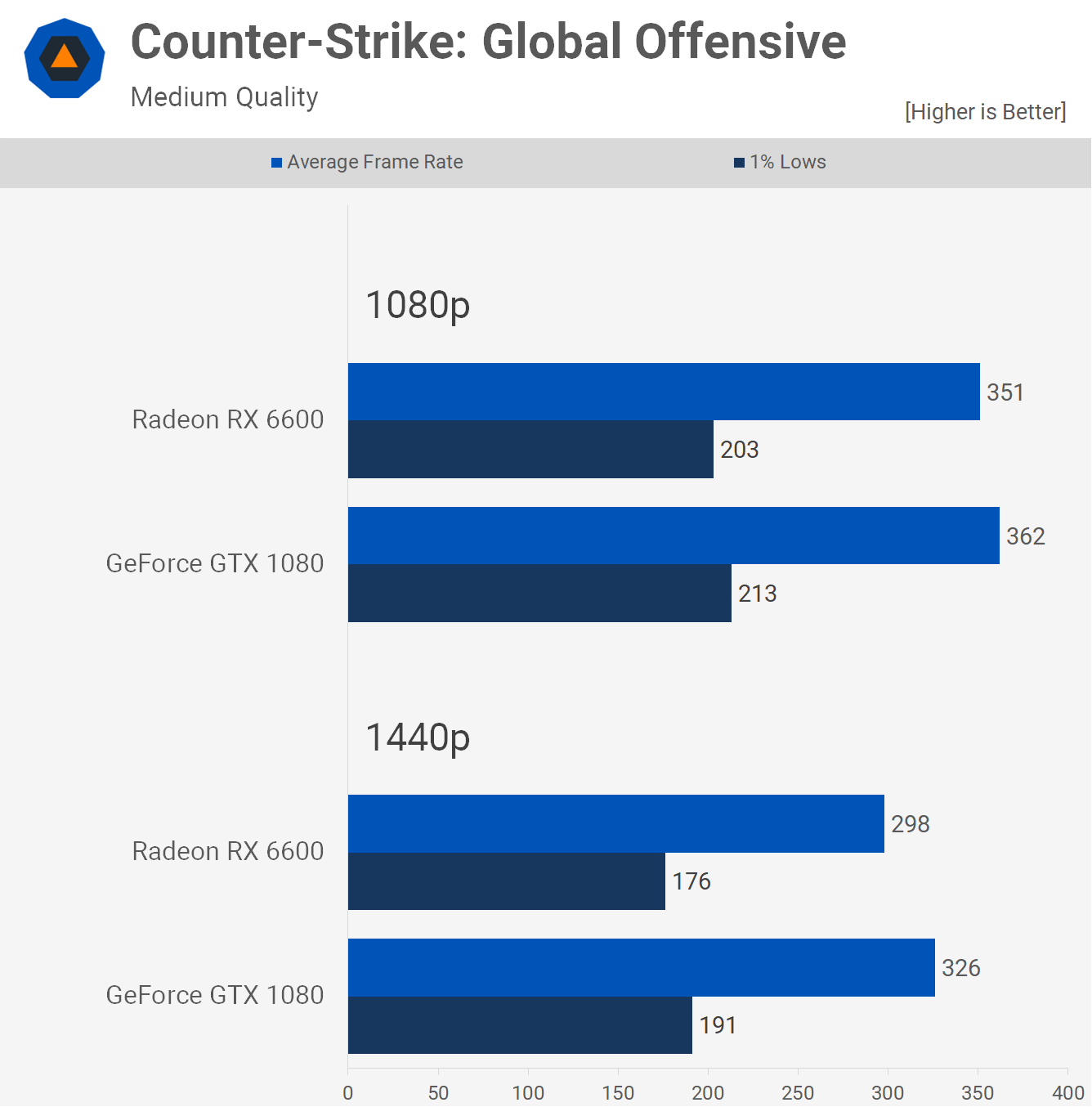
Moving on to Counter-Strike, we find similar performance between these two GPUs and in fact the old GTX 1080 was a little faster, though we're talking about a small 3% difference at 1080p with a slightly larger 9% margin at 1440p. It's probably not that surprising to learn that the old GeForce GPU performs well in ancient DirectX 9 games.

Where it didn't perform well at all was in Hitman 3, delivering just 78 fps on average at 1080p with just 47 fps at 1440p. This meant the Radeon 6600 was a massive 55% faster at 1080p and 60% at 1440p where it spat out a highly playable 75 fps on average.
The difference was so massive that we went back to make sure all the quality settings were the same, and of course, they were.
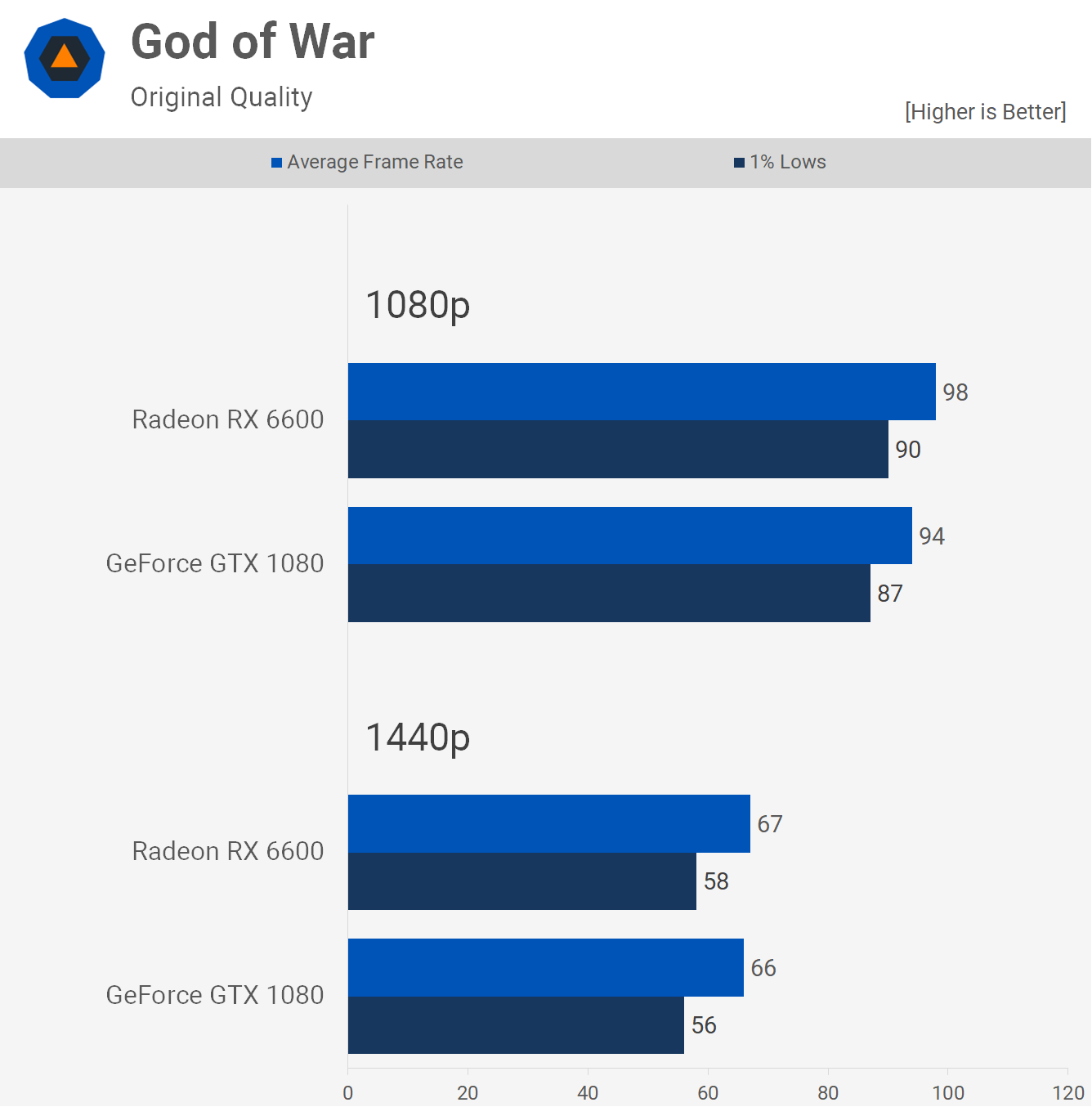
The God of War results were far more competitive and this was one of the best showings for the GeForce GTX 1080 in a modern game. Performance was virtually identical in this game, especially at 1440p. So it was good to see the once mighty GTX 1080 still delivering the goods in a brand new title, at least brand new for PC.

The GTX 1080 also did well in the new F1 22 racing title using the high quality preset which omits ray tracing support. Overall performance was competitive as this time the Radeon 6600 was just 8% faster at 1080p and 10% faster at 1440p.
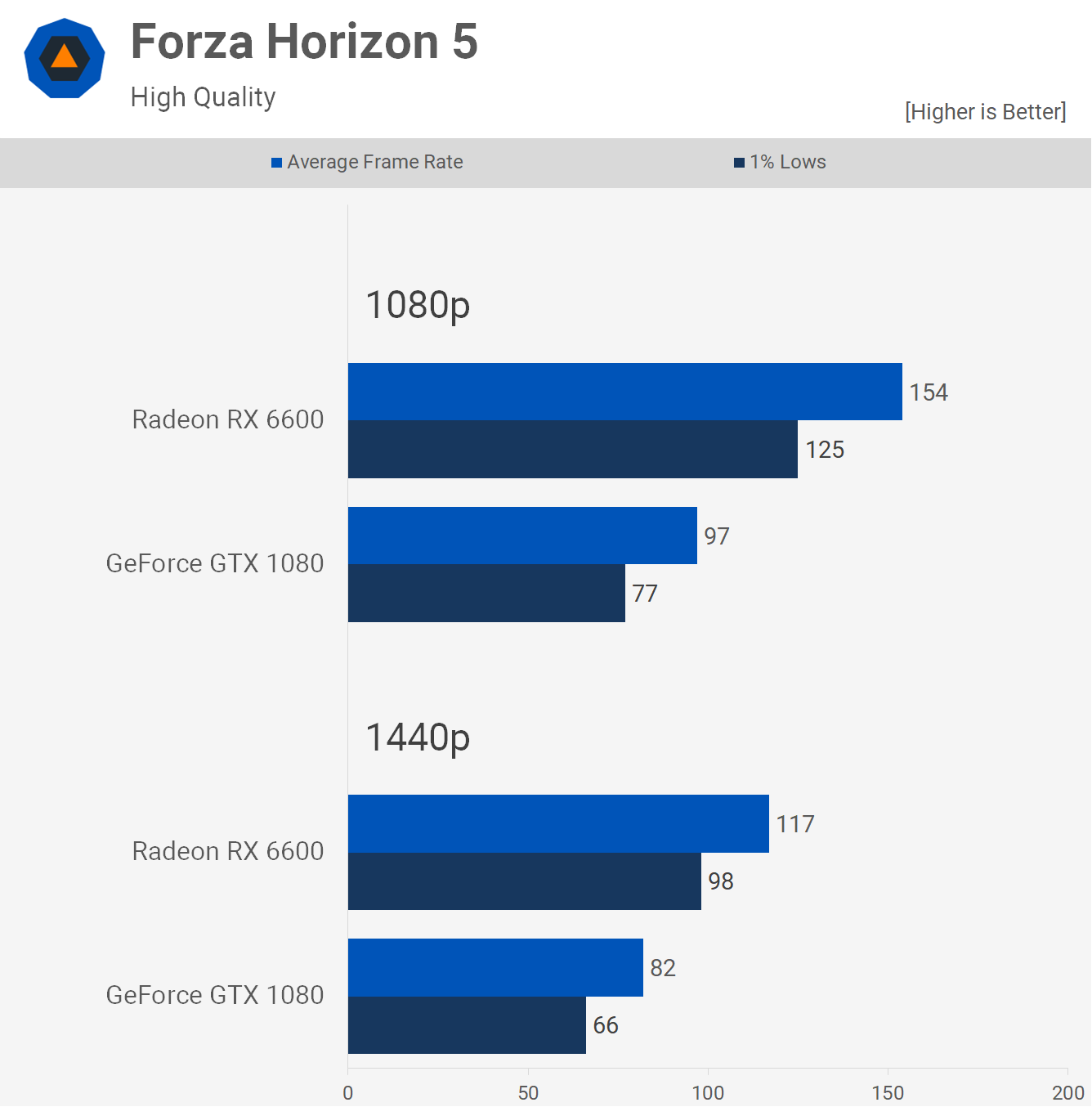
Forza Horizon 5 works really well with AMD hardware, especially with Resizable BAR enabled as we have tested today. As a result the Radeon 6600 was almost 60% faster at 1080p and just over 40% faster at 1440p.
Granted, the GTX 1080 was good enough at both resolutions with well over 60 fps, but you're getting a high refresh rate experience with the Radeon GPU, or alternatively you can crank up the visual quality settings.
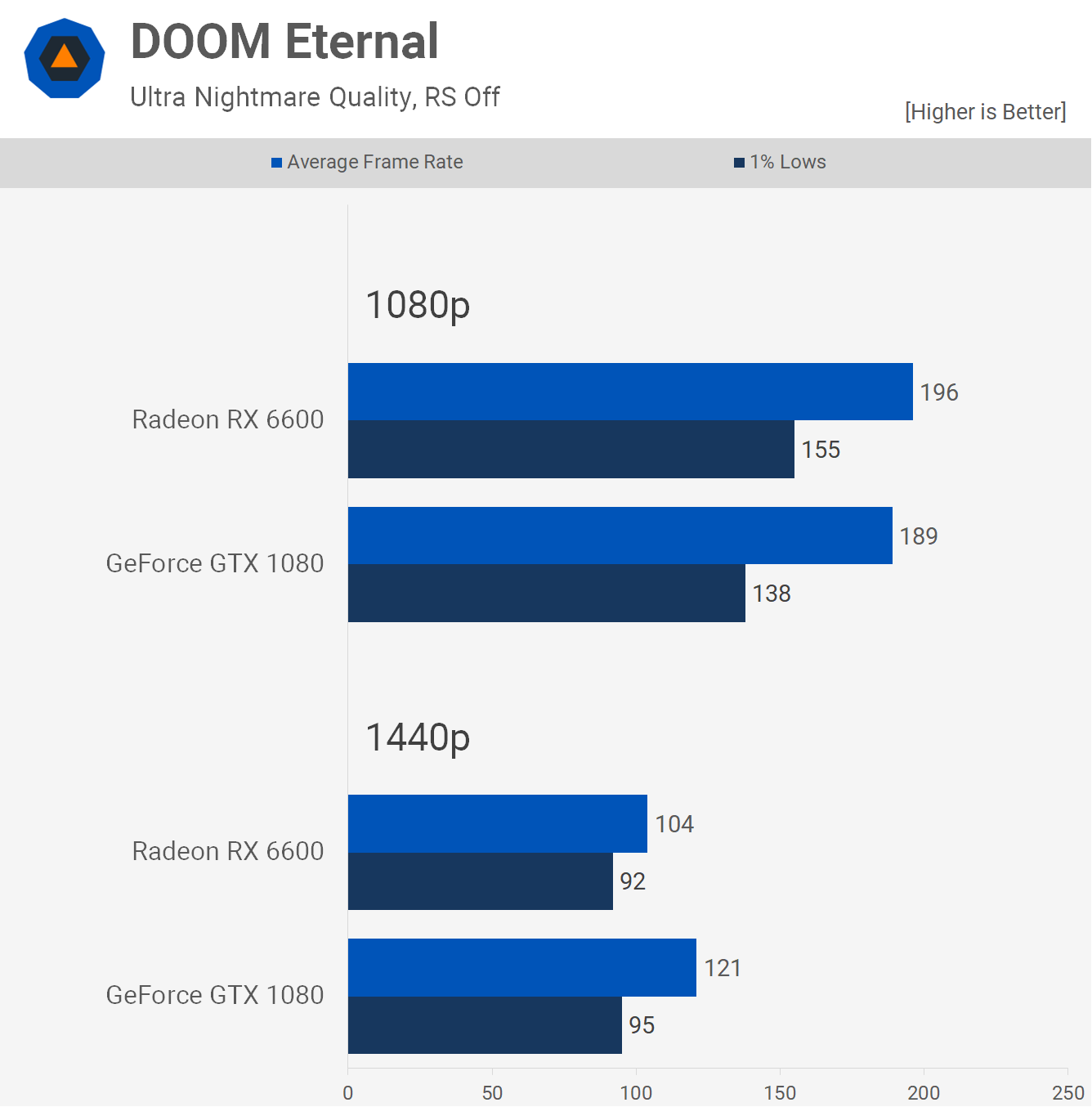
The Doom Eternal results are often interesting and they didn't disappoint here. At 1080p the Radeon 6600 just managed to budget ahead of the GeForce GTX 1080, though we did see considerably better 1% lows.
However, things changed at 1440p and now the GTX 1080 edged ahead by a 16% margin, though the 1% lows were similar. It seems that the Infinity Fabric isn't making up for the lack of memory bandwidth, handing the GeForce GPU a clear performance advantage.
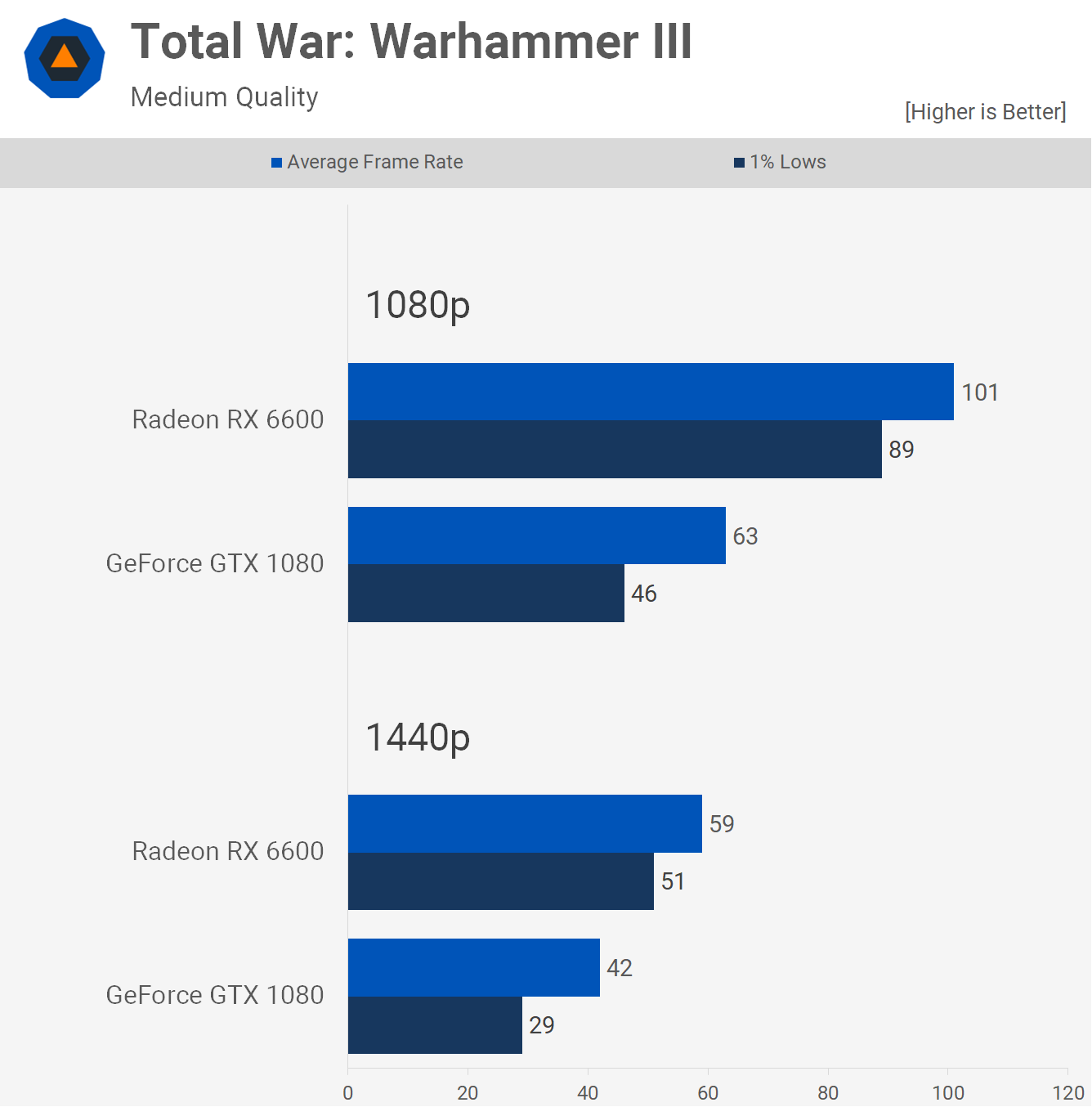
Warhammer III was released earlier this year, so it's a new title and it's one where the GTX 1080 doesn't perform well at all, possibly due to a lack of driver optimization.
As a result, the Radeon RX 6600 was 60% faster at 1080p and 40% faster at 1440p. We've seen a few margins like this, particularly in newer titles and there doesn't always appear to be a technical reason for the performance discrepancy, so it could simply be due to driver optimization.
I can't imagine Nvidia's prioritizing Pascal anymore, it's more in the "does it work category" and if so that's good enough.
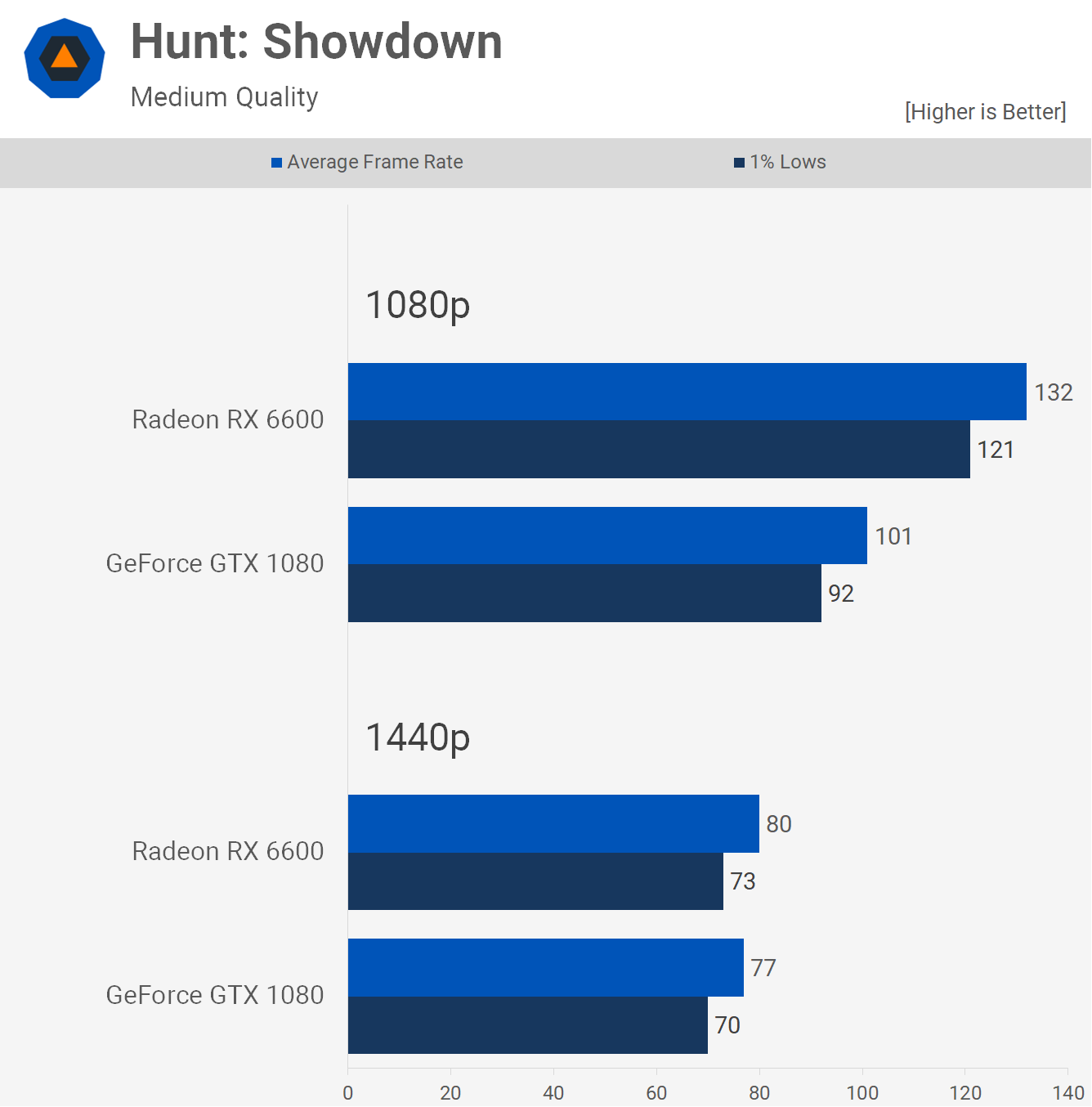
Moving on to Hunt: Showdown, here the Radeon 6600 was much faster at 1080p delivering 31% more frames, but only slightly faster at 1440p. We've known for a while that RDNA2 GPUs are a little more memory bandwidth limited at higher resolutions, but this kind of difference relative to Pascal is surprising.

Next we have Cyberpunk 2077 and here the Radeon 6600 is 44% faster at 1080p and 37% faster at 1440p, which shows a bit more consistency between the two tested resolutions.
This was an easy win for the Radeon GPU and using the medium quality settings it was able to deliver smooth playable performance at 1440p whereas the GTX 1080 was noticeably janky with frame dips in the 30s.
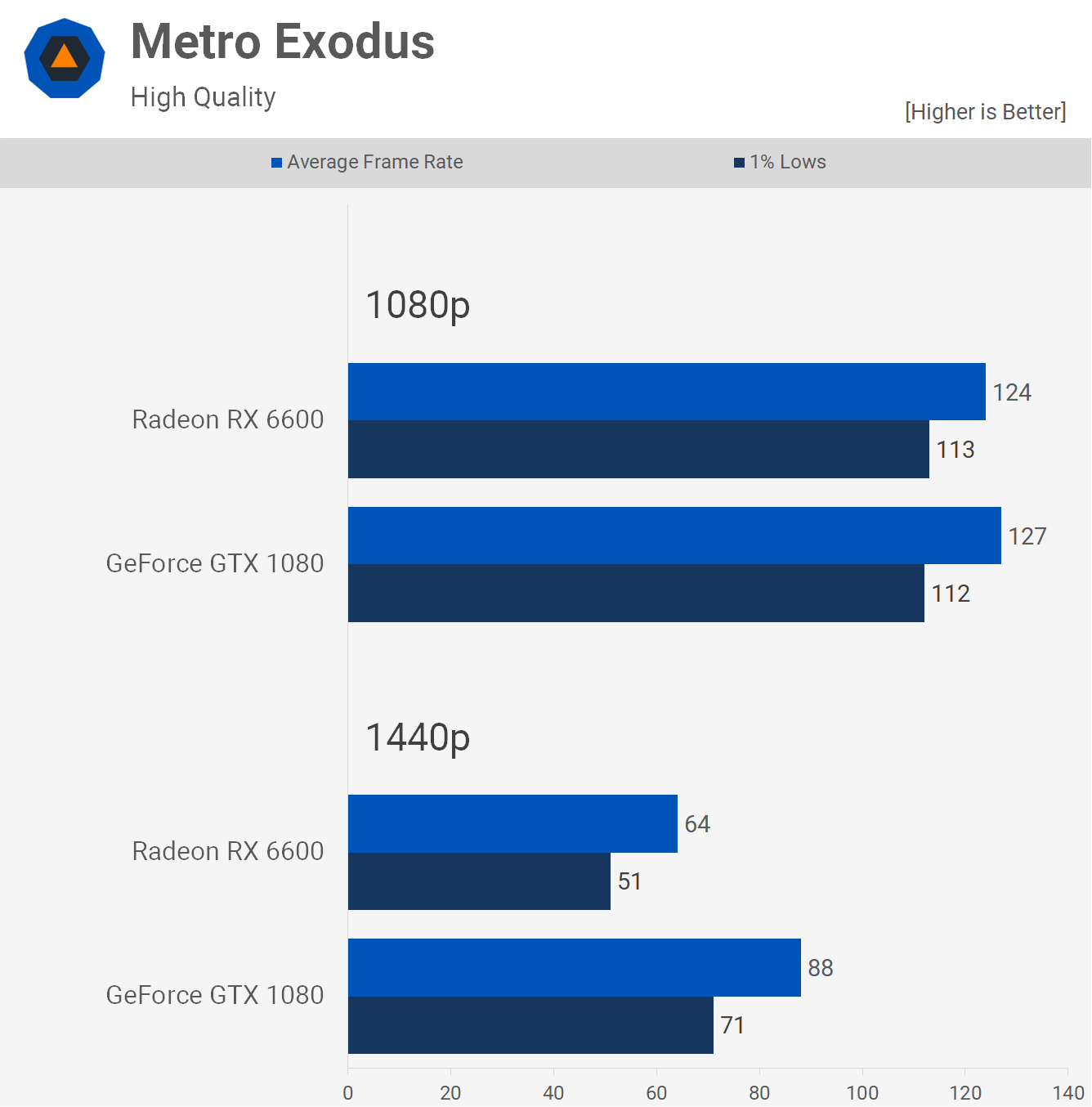
Metro Exodus is an Nvidia sponsored title and as an early-2019 release Pascal is well optimized. The GeForce GTX 1080 basically matched the RX 6600 at 1080p, but as we've often seen the old flagship does better at 1440p and this time it does much better relative to the Radeon GPU, offering a massive 38% performance advantage. A rare and very convincing win here for the old GeForce flagship.
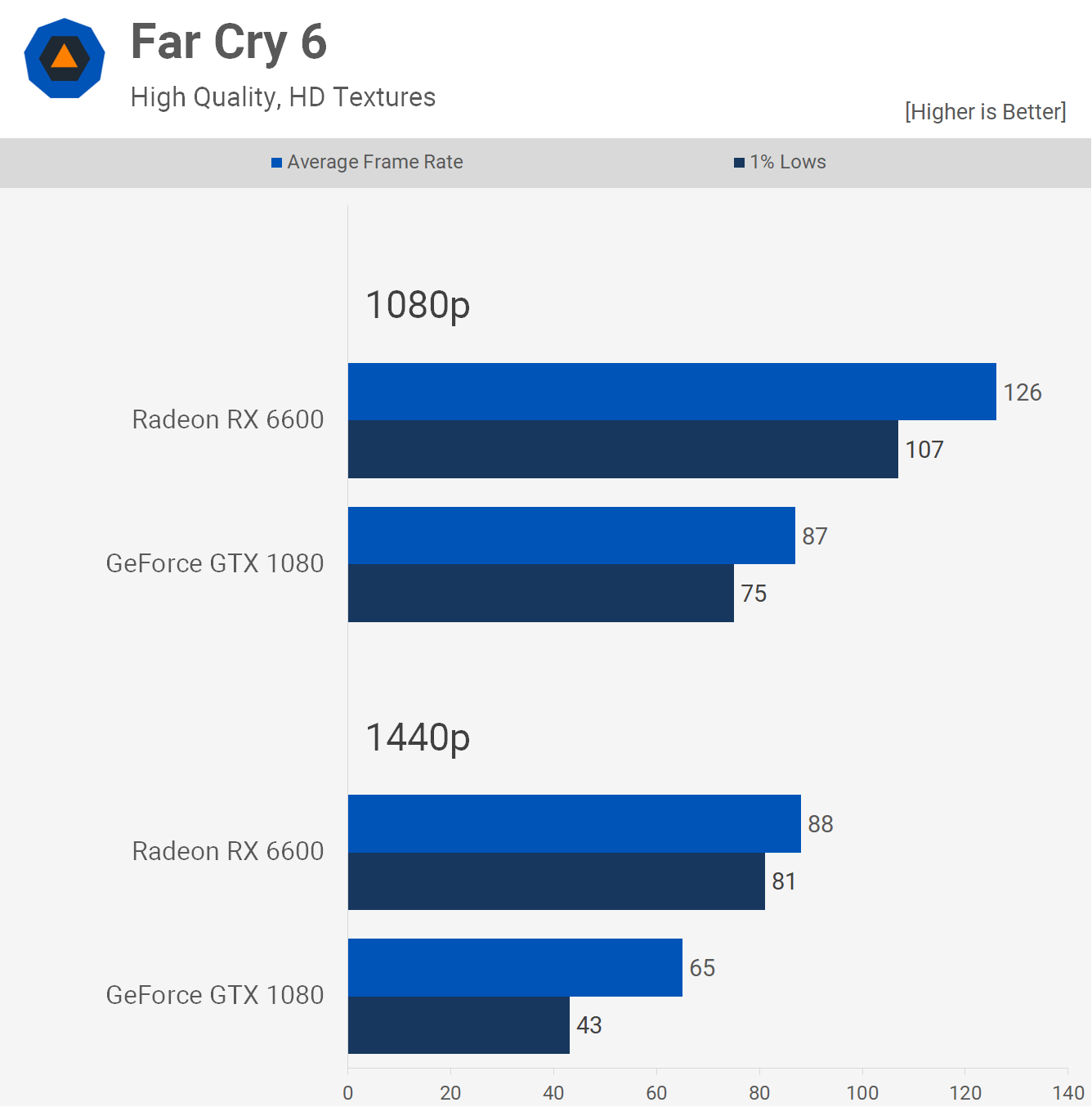
Next up we have Far Cry 6 and this is a late 2021 release sponsored by AMD. As we've seen with almost all recently released games, the RX 6600 destroys the old GTX 1080 offering 45% more performance at 1080p and 35% more at 1440p.
The GTX 1080 was still capable of delivering playable performance, especially at 1080p, but the experience was noticeably better with the newer GPU.

Assetto Corsa is a 2018 release, quite an old title at this point and again it's one that Pascal should be well optimized for and that appears to be the case. The Radeon 6600 was just 6% faster at 1080p, while the GTX 1080 hit the lead at 1440p, albeit by just a 3% margin. Overall great results from both GPUs.
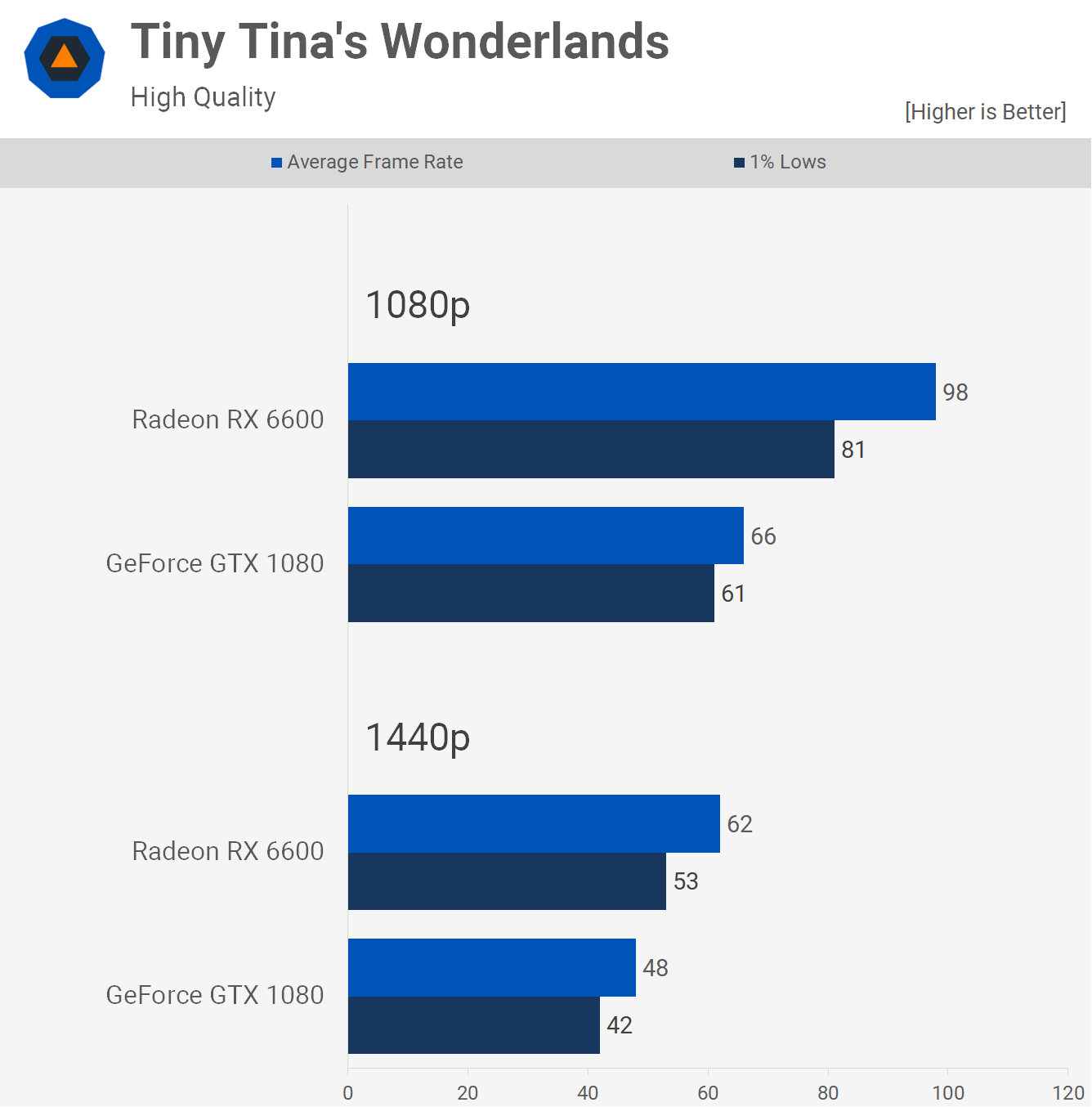
Tiny Tina's Wonderlands is a 2022 release and here the RX 6600 mows the GTX 1080, offering almost 50% more frames at 1080p and 29% more at 1440p.
Those are some big margins and more importantly at 1440p it was the difference between 48 and 62 fps using a dialed down quality preset.
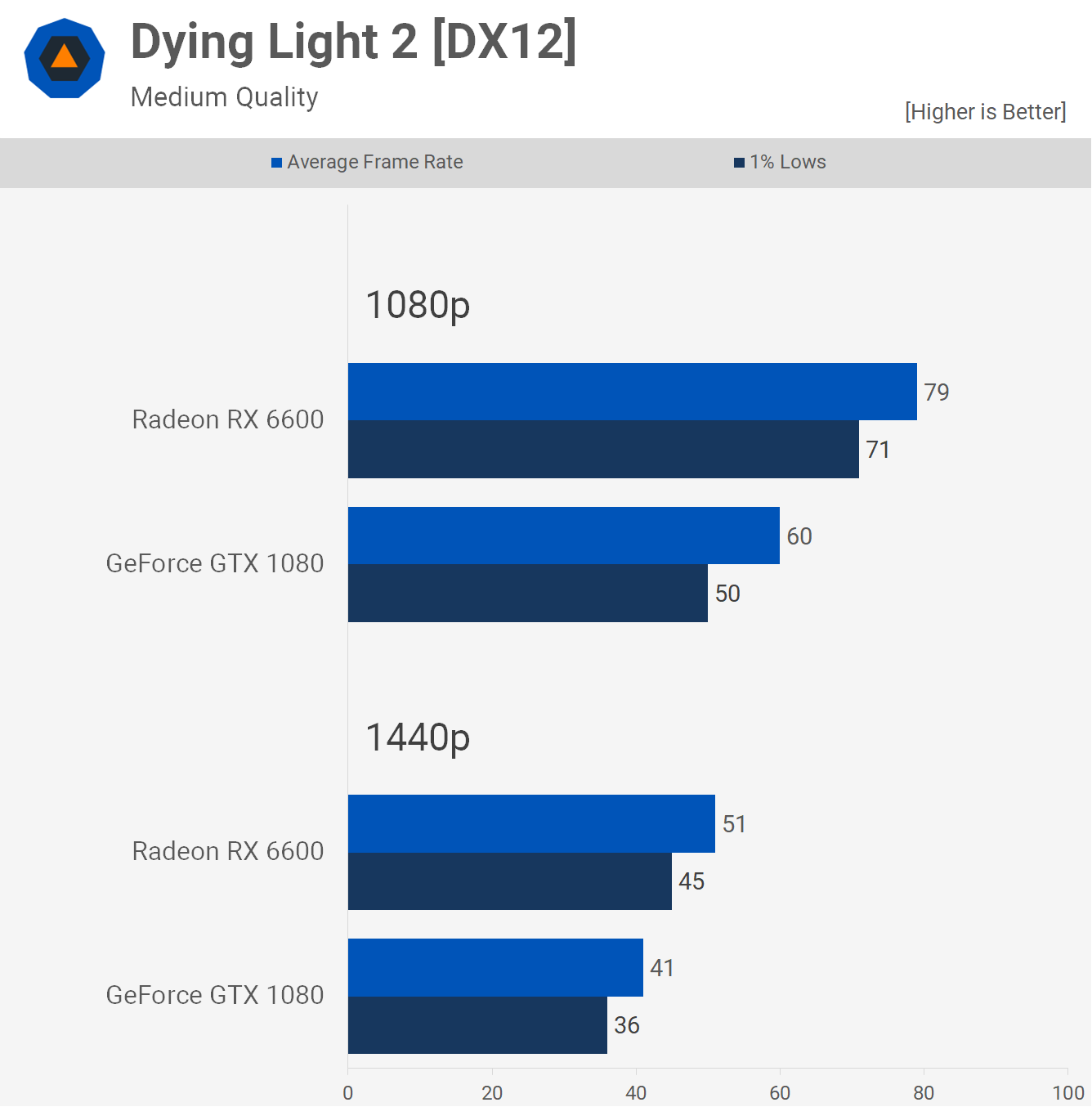
Yet another 2022 release is Dying Light 2 and once again the RX 6600 easily handles the old top gun Pascal GPU offering up 32% more frames at 1080p and 24% more at 1440p.
The additional performance at 1440p will be really noticeable and note we're already using heavily dialed down quality settings with the medium quality preset.

The last game we're looking at individually is War Thunder, which is another old game, though it has received updates since its official release in 2016. This is an older game and as such Pascal will be optimized for it and we're certainly seeing evidence of that with the RX 6600 and GTX 1080 neck-and-neck at 1080p while the GeForce GPU nudged ahead at 1440p.
51 Game Average
We've just looked at the results for many but not all of the 51 games tested, so there's still a mountain of data we haven't gone over, but to save time and get to the point, we'll jump into the breakdown graphs comparing the margins for all the games tested...

Starting with the 1080p data, we see that on average the Radeon RX 6600 was 20% faster, so quite a significant average margin. As we just saw, many of the newer games see the Radeon GPU pull ahead by a 20% margin or greater with some going well beyond 40%... in fact, there were 8 titles where that happened.
Meanwhile there wasn't a single game at 1080p where the RX 6600 was slower by a 5% margin or greater with the biggest loss seen when testing Total War: Three Kingdoms where it was a mere 4% slower. That's a clear victory here for the newer and more budget oriented Radeon GPU (although it's become less expensive just recently due to the well documented GPU price inflation).

The margin comes down quite a bit at 1440p as the Radeon RX 6600 was 13% faster on average at this resolution. The results are certainly more mixed here.
The Radeon GPU really struggled in Metro Exodus and Doom Eternal, though those were the only two games to see double-digit margins. Meanwhile there were 17 titles where the Radeon GPU was faster by 20% or more, so although the average margin was ~13%, the Radeon RX 6600 was still very dominant in a good number of titles.
What We Learned: Old vs. New
As good as the GeForce GTX 1080 was in its day, six years is a bit too long in the game. There are much better products on offer today and comparing a $200-ish second hand GTX 1080 to a $270 brand new Radeon RX 6600 is a non-contest, with the Radeon GPU well worth the 30-40% premium.
Granted, the performance uplift isn't always overly significant but it's becoming increasingly obvious that Pascal owners are well down on the list when it comes to receiving optimizations for newer titles, if they make the list at all.
Some will be quick to point out that the Radeon 6600 supports ray tracing, but we feel that's not a factor on this performance tier as you'd have to heavily compromise on other quality settings to achieve playable frame rates with RT effects enabled in most titles.
FSR 2.0 might scale better on the RDNA2 GPU so there is that, but of course AMD's upscaling method works on the GTX 1080, too.
With the Radeon RX 6600 as the best value GPU right now, it's cool to see it outpacing a 6 year old flagship, not necessarily a flagship of the Pascal generation, but it was the flagship for 2016.
The Radeon GPU is also more affordable, so that's some progress there, though overall it's been slow for various reasons, none bigger than imaginary coins.
For those of you tossing up between these two GPUs we hope this review was useful and for those of you still rocking a GTX 1080 our advice is to hold on for a little longer yet and see what the next generation brings in terms of performance and pricing for not just the new products, but also current generation GPUs.
